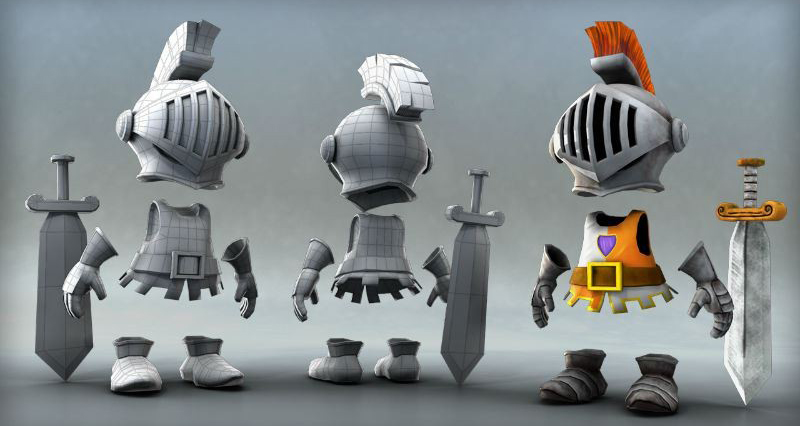The world of computer games is a whole culture that unites players around the world, creates many press events, and is also the main flagship of esports.
Every year, new computer games are released. The task of the users is to decide whether this game is good or not, whether it is good enough to have a sequel, whether it will become a top game. But, regardless of the user's opinion, the number of fans and popularity, a lot of time and effort is spent on the creation of a game world.
Our first impression of the game is always based on the quality of the graphics. The more skillfully the 3D model is created, the better the impression of the game will be. High precision, attention to detail, and realistic images attract users and often overshadow the plot of the game.
In the article, we will talk about how 3D models are created and what tricks developers resort to in order to achieve better quality.
It all starts with a concept art
Before talking about each stage of creation, it should be noted that these stages may go in a different sequence. After all, the development of a 3D character model will be different from the creation of an architectural object or vehicle.
The first step in creating a game model is a concept art. An artist or a group of designers embody an idea, and attach a small description to it.
At the stage of the concept, the artist makes a sketch and selects a concept that is put into production.
The concept is being worked out carefully. Often, the creators come up with several ideas at once to choose the best one. If the concept is chosen incorrectly, serious errors can be encountered at the modeling stage.
Sculpturing
The selected concept sketch from the 2D format should become a 3D one. Here begins the process of modeling or sculpting. At the sculpting stage, the modeller sculpts an object without restrictions on creativity.
The result of sculpting is a model that looks finished and is ready for further processing.
The peculiarity of objects after sculpting is a large number of polygons. Sometimes planes are superfluous. Also, such a model cannot be used in the game since the object must go through several more processing stages.
Retopology
After sculpting, the developer proceeds to retopology, or reduction of polygonality. On the stage, the polygonal grid is rebuilt and a new geometry is created. The model becomes more precise.
A low-poly grid is used for subsequent optimization. It is used in animation and UV maps.
At the end of the stage, the developer receives a fairly simple object. But this is a temporary phenomenon that will later take the desired form.
Creating a UV map
Scanning or creating a UV map is used to cut the faces of an object. The geometry of the model is cut along the faces on the plane. This is done for subsequent correct baking and texturing.
Baking a UV card
It is impossible to achieve the detailing of the object without this stage. It doesn't matter if it's a 3d building model or a spaceship, baking allows you to transfer the detailing from a high-polygonal model to a low-polygonal one. As a result, the object doesn't look flat (plastic) anymore, it has a shadow and half-shade, the right lighting.
Developers use different cards for baking:
- Normal Map. Helps to achieve the detailing without adding polygons. The map allows you to determine the light reflection off the surface. Transitions between the faces appear. The light is reflected as in a complex object. It means a model with a small number of polygons reflects the surface in the same way as a model with a large number of planes.
- Ambient Occlusion. An easy-to-use map that will add shadows where needed.
- Curvature. The principle of map operation is based on miscalculations of irregularities on the object. After the calculation, the map highlights the faces and shadows appear.
Texturing
The last stage is the imposition of textures, on which a three-dimensional object perception depends. If a 3d model plants is created, the modeler applies plants textures that match the coloring of the real object, as well as the features of its surface: rough, porous, smooth.
Texturing also conveys shading, lightening, or reflection of the surface.
To achieve a good result, modelers and artists have to go through many stages. Therefore, even the model that seems simple is actually not so simple. There is more than one hour of tedious work behind its creation.

